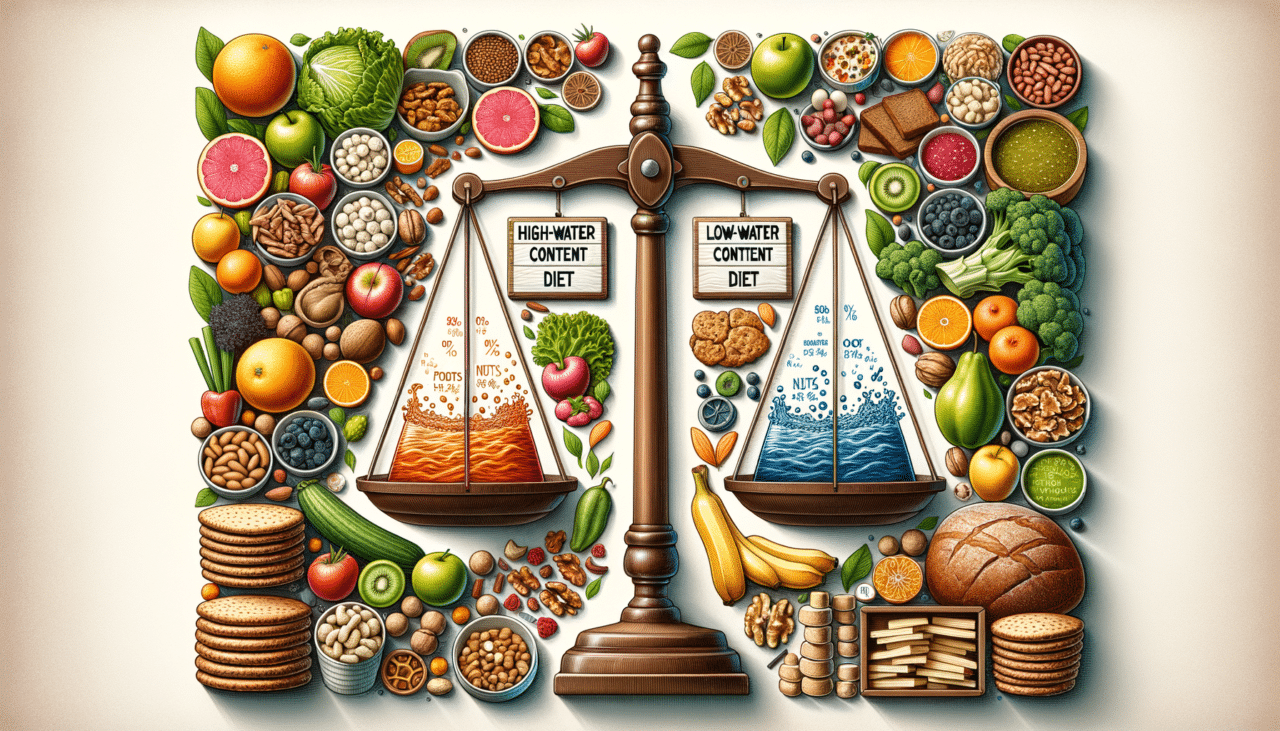The Great Hydration Debate: High-Water Content Diet vs. Low-Water Content Diet
In the ever-evolving world of nutrition, the debate between a high-water content diet and a low-water content diet is akin to choosing between a tranquil river and a rugged mountain trail. Each path offers distinct benefits and challenges, leaving many of us at the crossroads of dietary decisions. In this article, we will dive deep into the essence of both diets, unraveling their characteristics and drawing comparisons in a visually appealing and easy-to-understand format.
High-Water Content Diet
Characteristics
1. Hydration Powerhouse
Imagine your body as a lush garden. A high-water content diet is like a gentle rain, providing continuous hydration to your cells. This diet is rich in fruits and vegetables such as cucumbers, watermelons, and strawberries, which contain over 90% water.
2. Weight Management
Picture a feather floating on water. That’s how a high-water content diet can make you feel—light and unburdened. These water-rich foods are typically lower in calories, helping control hunger and aiding in weight management.
3. Digestive Ease
Think of a well-oiled machine. With high-water content foods, your digestive system operates smoothly, reducing the risk of constipation and promoting regular bowel movements.
4. Nutrient Density
Consider a vibrant palette of colors. A high-water content diet is rich in essential vitamins and minerals, contributing to overall health and vitality.
Low-Water Content Diet
Characteristics
1. Energy Concentration
Visualize a concentrated beam of light. Low-water content foods such as nuts, seeds, and grains pack a high caloric punch, providing sustained energy throughout the day.
2. Caloric Density
Imagine a hearty stew. A low-water content diet consists of calorie-dense foods, which are ideal for individuals needing more energy, such as athletes or those with high metabolic rates.
3. Longevity and Storage
Think of a preserved artifact. Low-water content foods have a longer shelf life, making them convenient for storage and travel without spoilage concerns.
4. Richness in Protein and Fats
Picture a solid foundation. This diet is often rich in proteins and healthy fats, essential for muscle building and hormonal balance.
Comparative Table: High-Water Content Diet vs. Low-Water Content Diet
| Features | High-Water Content Diet | Low-Water Content Diet |
|---|---|---|
| Hydration Level | High (over 90% water in many fruits and vegetables) | Low (minimal water content) |
| Caloric Density | Low (ideal for weight management) | High (suitable for energy needs) |
| Digestive Benefits | Promotes regularity and ease | Can cause digestive strain if not balanced |
| Storage & Longevity | Short shelf life, requires refrigeration | Long shelf life, stable at room temperature |
| Nutrient Profile | Rich in vitamins and minerals | Rich in proteins and healthy fats |
| Target Audience | Those seeking hydration and weight loss | Athletes and individuals with high energy requirements |
Conclusion
In the realm of dietary choices, the high-water content diet and low-water content diet each serve as unique pathways to wellness. Whether you are drawn to the refreshing allure of water-rich fruits or the concentrated energy of nutrient-dense foods, understanding the nuances of each can guide you in tailoring a diet that aligns with your lifestyle and health goals.
Embrace the journey of discovery, much like Zelma’s publications, where analytical insights blend seamlessly with creative storytelling. The choice between these diets is not just a decision; it’s a personalized adventure in nourishing your body and soul.
By exploring these dietary landscapes, we hope to have illuminated the path for you. Share your thoughts or experiences with these diets in the comments below, and let’s embark on this nutritional journey together.

Comments (0)
There are no comments here yet, you can be the first!